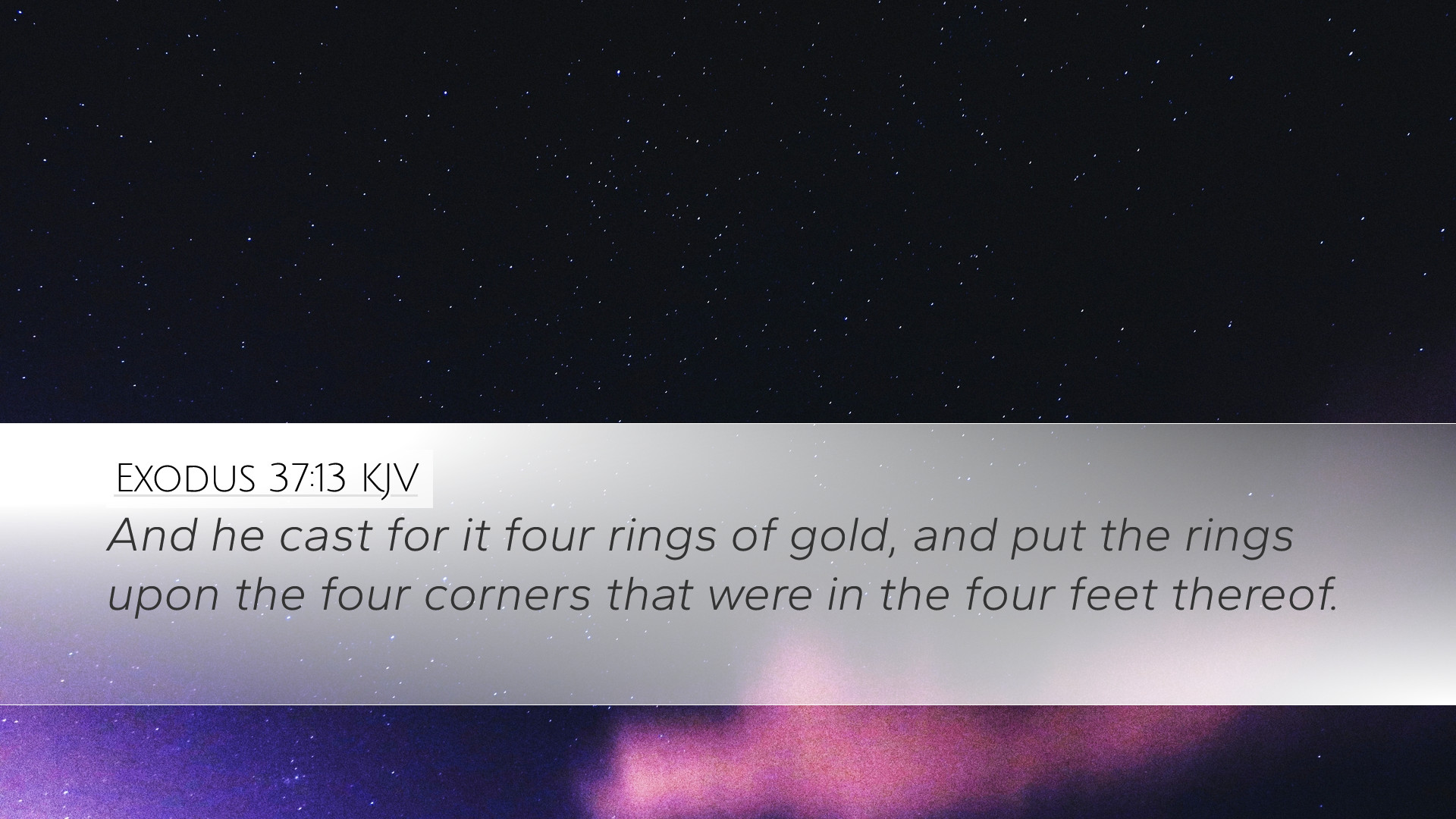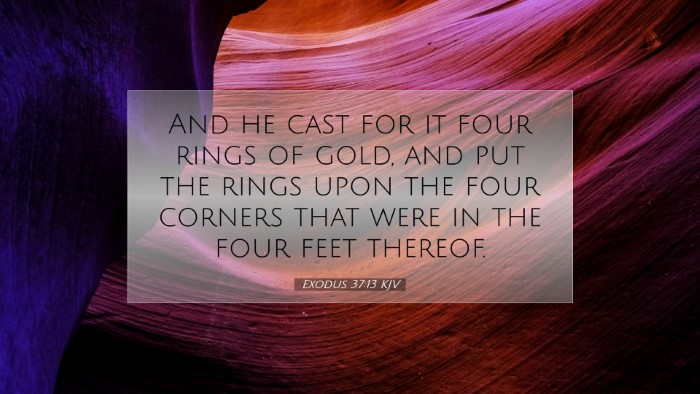Commentary on Exodus 37:13
Exodus 37:13 states: "And he cast for it four rings of gold, and put the rings upon the four corners that were in the four feet thereof."
Contextual Background
In this verse, the specific mention of the construction of the Tabernacle furnishings is part of a broader narrative detailing the divine instructions given to Moses on Mount Sinai. The construction of these sacred items serves not only a practical purpose but also a symbolic one, embodying the presence of God among His people.
Insights from Commentators
Matthew Henry
Divine Instruction and Obedience: Henry emphasizes that God provided specific guidance to His people, indicating that worship must be conducted according to divine specification. Each detail matters; thus, the construction of the rings symbolizes the people’s readiness to follow God's precise commands.
Significance of the Rings: The four rings symbolize stability and support, crucial for transporting the sacred furnishings. The rings serve as tangible reminders of God's covenant with the Israelites, illustrating their journey and God's faithfulness.
Albert Barnes
Material Significance: Barnes notes the use of gold rings as indicative of the value and sanctity of God's dwelling. Gold, being a precious metal, signifies the glory of the Lord and the importance of reverence in worship.
Spiritual Application: Barnes further illustrates that just as the rings were necessary for the physical structure, believers today must seek appropriate measures to maintain their spiritual posture. The disposition of one's heart in worship is as relevant as the form it takes.
Adam Clarke
Physical Structure and Theological Implication: Clarke articulates that the rings not only facilitated functional aspects of the Tabernacle but also represented the idea that God's holiness ought to be carefully handled and respected. The strategic placement of the rings reflects a broader spiritual truth of being prepared to bear spiritual burdens.
Symbolism of Four Corners: The four corners can be understood as representative of God's omnipresence. It illustrates that no matter where the people are located, the presence of God is accessible, as signified by the rings allowing movement of the Ark.
Theological Reflections
This verse serves as a reminder of the continuity of God's presence with His people. Each element of the Tabernacle was not only functional but laden with theological significance. The rings, as practical aspects of worship, indicate the essential nature of obedience and reverence in approaching God.
Conclusion
In closing, Exodus 37:13 encapsulates a broader narrative of divine instruction, worship, and the human response to God’s calling. As pastors, students, theologians, and scholars engage with this text, it invites reflection on both the details of worship and the overarching principle of God's desire to dwell among His people.
Key Takeaways
- Detailed obedience: Worship must align with God's specifications.
- Value of the sacred: The materials used in worship reflect the holiness of God.
- Practical readiness: Believers need to be equipped for their spiritual journeys.
- Omnipresence of God: God is accessible to His people, regardless of their location.


